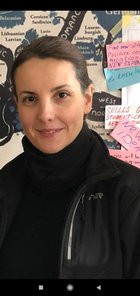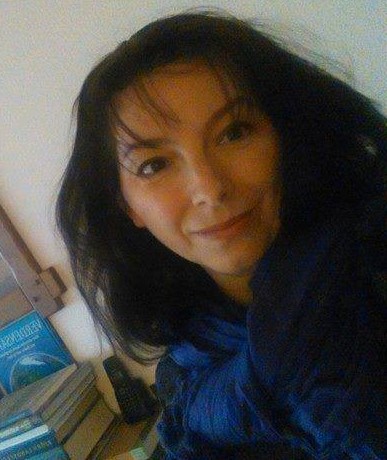Early twentieth century society was undergone profound changes. Scientific progress and industrial revolution marked the emergence of a posthuman and necessitated the writers to create new imaginary of the protagonists. According to Jeff Wallace, “there are different kinds of posthumanism”. In this paper, I take ‘posthumanism’ to be defined in a different context as an “extremely amorphous critical discourse with a wide-range of applications in modern scholarship” (Zoe Jaques). I intend to show the reflection of posthumanistic ideas in Lawrence’s short stories The Border Line (1924), The Woman Who Rode Away (1925) and Sun (1926). I turned namely to these stories as they most brightly depict and reveal posthumanistic ideas in Lawrentian protagonists’ coalescence with natural environment, which is personalised through the forest, trees and sun. Jeff Wallace in his book D. H. Lawrence, Science and Posthuman offers Deleuze and Guatarri’s concept of “rhizome” as a posthuman metaphor for tree. To Deleuze and Guatarri, Lawrence’s work epitomizes the alternative to the conventional organicism, because the rhizome is characterized by “variation, symbiosis, offshoots, and contagion”.
Lawrence is known to voice objections against machinery and mechanical development. The writer notes that mechanization enslaves and depersonalise the individual. Importantly, but this issue is consistent with the problem of person’s alienation and insularity in our time. With the emerging of a myriad of modern devices in the twenty-first century, our society is becoming a cyber-society. The more one uses modern technologies, the more anti-social one becomes as well as limited in communication with another human beings and eventually taking risk to transform into “cyborgs”. Lawrence’s posthuman can also be considered as a “cyborg” by Donna Haraway’s who in her essay “A Cyborg Manifesto” presents a concept that a cyborg is a rejection of the boundaries which separate human from animal and human from machine.
Lawrence prophesies the birth of posthuman, who presumes to be satisfied with a life in coalescence with environment. The writer appeals to a reunion of human being with natural environment. In personalising nature, Lawrence creates renewed characters: posthumans whose ecological consciousness makes them progressive, uniting and liberated.

I have been working as a senior lecturer at Oles Honchar Dnipro National University since 2002. I am a pre-doctoral researcher, working on thesis devoted to D.H. Lawrence’s short stories. My academic papers about D. H. Lawrence’s short stories were published in peer-reviewed journals (twenty in total) but mainly in the post-Soviet academic space. I have translated three of D. H. Lawrence’s short stories (“Second Best”, “Shades of Spring” and “Witch a la Mode”) into Ukrainian to familiarize our readers with the writer’s short fiction. They were published in Ukrainian Journal of World Literature “Vsesvit”. I am a regular participant of the national level conferences about British literature, modernism and modernist writers in particular. I am interested in world culture, translation studies, literary translation and literature (especially modernism). I would like to broaden the contacts with likeminded people, share and exchange experience.
Denis Villeneuve’s film Blade Runner 2049 can be read as a postmodern detective story that explores the indeterminacy concerning whether its protagonist, K, is either human or replicant. I argue that it is through the search for the clarity and distinction between these two ontological categories that the film concurrently investigates how the aesthetic and ethical category of the humane becomes, or can become, separate and distinct from that of the ontological category of the human. Through this separation, I propose that the humane is characterized by the desire to build and shape connections of affective intimacy regardless of whether a subject is, or can be, ontologically characterized as human.
Through my reading of the film’s engagement with artificial memory, I argue that what initially appears as artificial allows us to reconsider the relationship between the notions of authenticity and intimacy, wherein the latter is not necessarily founded upon the former. Through the distinction of the concepts of schein (illusion/semblance) and erscheinung (appearance) and how these have been re-read by Rei Terada, I delineate how the appearance of what is deemed illusionary and what appears as semblance is not divisive in establishing intimacy between subjects in the film. I trace how this use of semblances implicitly rejects a notion of intimacy that would necessarily rest on the humane coinciding with, or being exclusive to, the authentically human. The construction of the humane through illusion and appearance in my reading of Blade Runner 2049 consequently develops as a posthumanist critique of a humanist cultural imagination in which the humane is deemed the sole domain of the human.

Andries Hiskes is a lecturer at the department of nursing at The Hague University of Applied Sciences, where he teaches narrative medicine, participative healthcare, and disability studies. As a PhD candidate at the Leiden University Centre for the Arts in Society, he works on the intersection between disability studies and affect theory. His research examines literature and art in which affective responses are evoked and/or shared by deviant and disabled bodies, focusing on how the artwork is constructed to elicit such responses. Concurrently, through the added emphasis on emotional and affective responses provoked by disabled bodies, his research explores how art may manipulate such responses.
This paper dwells on the types of modification of the warriors imagined in skaldic poetry by highlighting the recurrence of a particular motif of hybridization, where warriors were melded their weapons. In order to discuss this topic my paper will first examine how the relation between body and weapons has developed through time starting with the 7th century poem Krakumal where the arrows are described as the wound-herrings and wolves of the wounds, to the 10 th century when the armour is expressed as the firmly sewn shirts of the battle- birches, where battle birches is a kenning for warriors. Ann Weinstone uses the word suture (for what the French call assemblage) to explain how posthumanism creates sutures between humans and animals & humans and technology. The warrior hence appears in skaldic poetry as a posthuman entity par excellence, combining man and weapon (machine) in one body. The skaldic descriptions of the relation between a Viking warrior and his weapons create a special aesthetic understanding of a body at the intersection of the human body and machine- space. My discussion about warrior-animal relation revolves around the following kennings for corpse: the wolf’s mouthful, the treasure of the raven and the prey of the she-wolf from skaldic poems Torfinnsdrapa, Vellekla and Thoralfs drapa Skolmssonar. The Viking skalds considered humans and animals in a strong relation in a sense that humans become aware of their own finitude once that they turned into corpse prone to be eaten by wild animals. My paper sat out to explore also the inter-species relations between wild animals who ate the corpse and the domestic animals who served the human, as reflected in skaldic poetry of the Viking age. My presentation illuminates the collaboration between the body and technology, on one side and body and animals on the other side, and highlights the value in viewing the body, weapons and animals in skaldic poetry as comunicating and influencing each other.

I hold a PhD in Linguistics from the Department of General Linguistic, Babes-Bolyai University of Cluj. In my dissertation I view kenning metaphor as a unit of repeated speech in the conceptual field of Eugeniu Coseriu’s text linguistics. My main academic interests include Linguistics, Poetics and Old Norse Literature. I am affiliated scholar to C-SAC, Centre for the Study of Antiquity and Christianity, University of Aarhus, and member of Scandinavian Association for Language and Cognition.